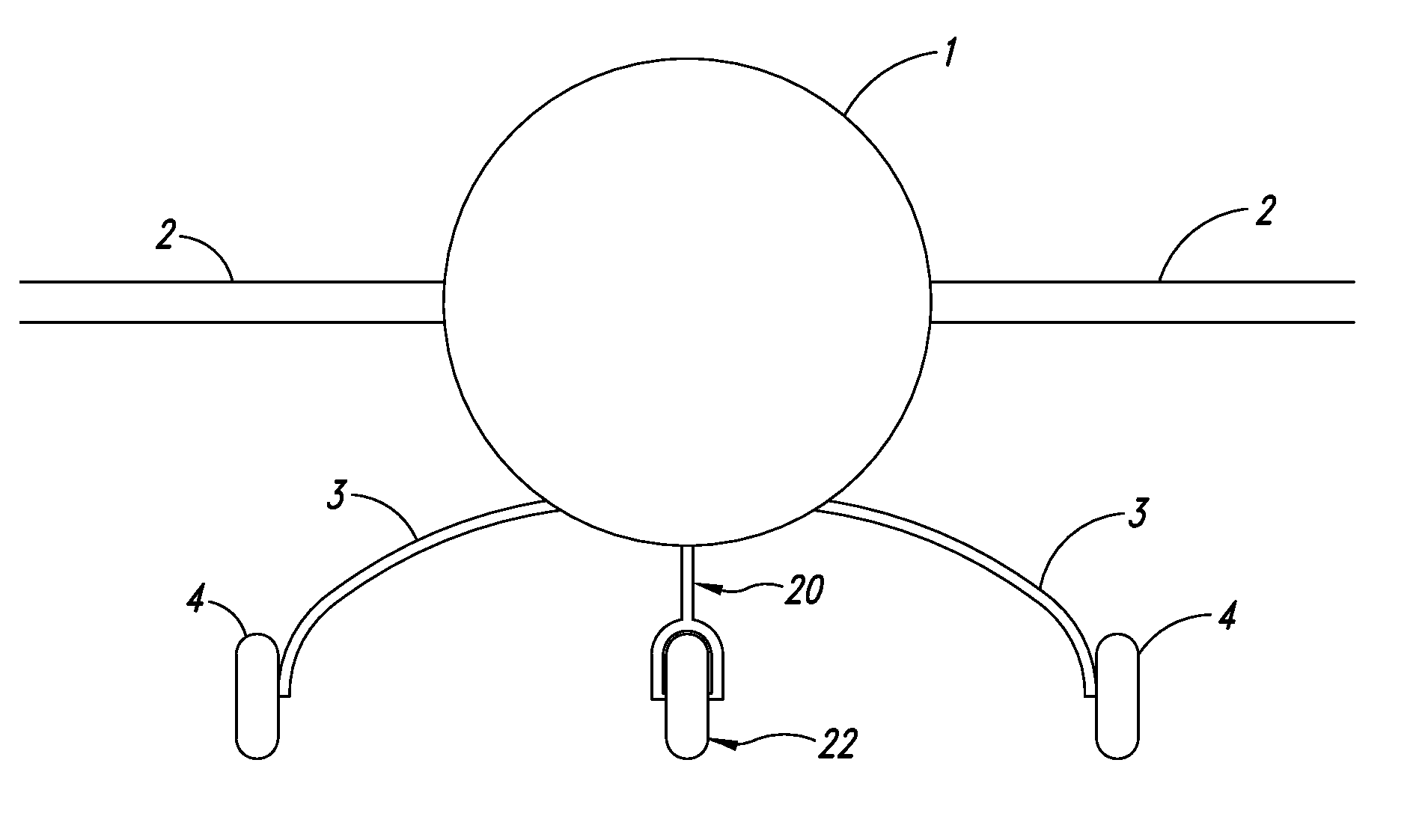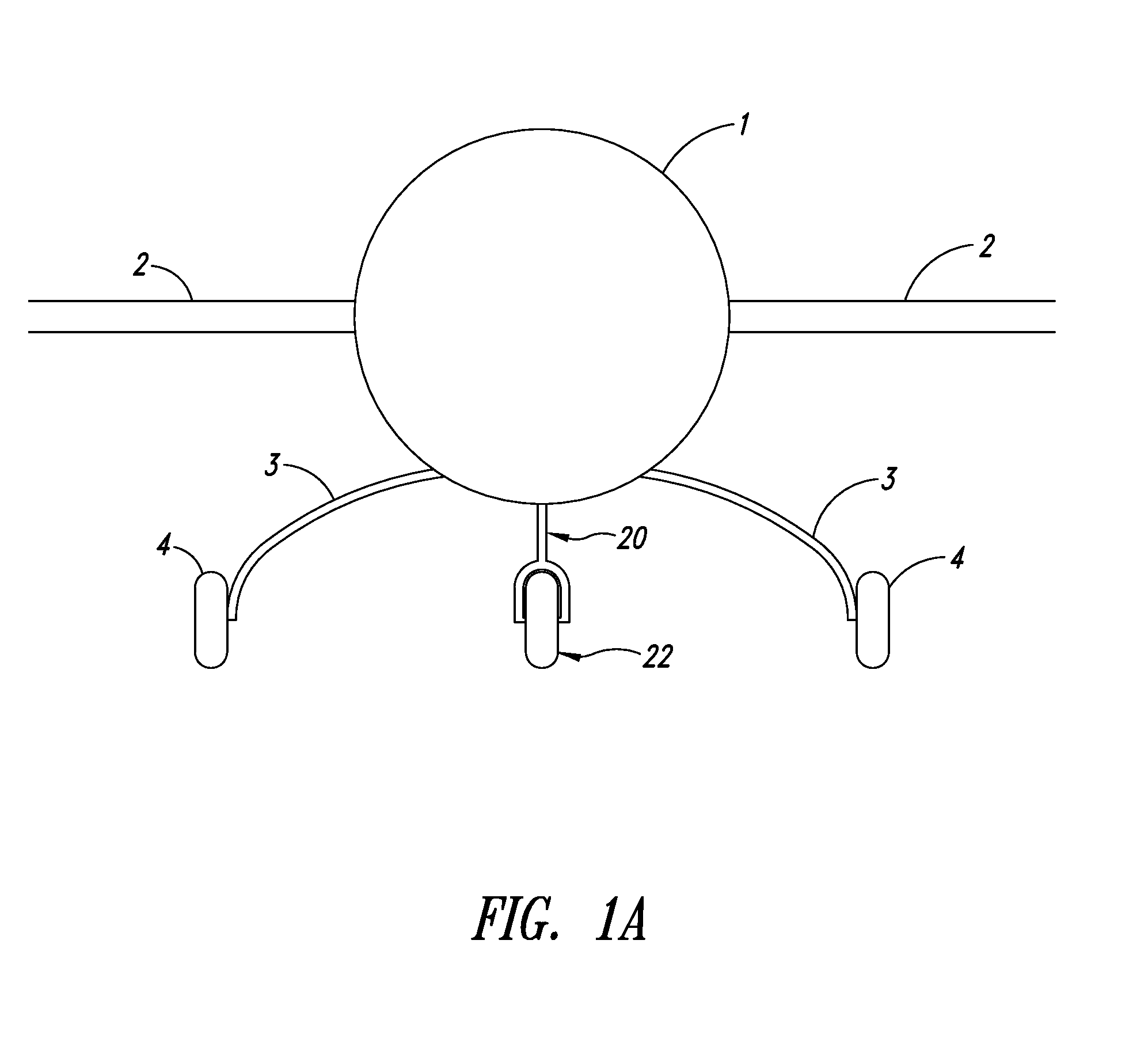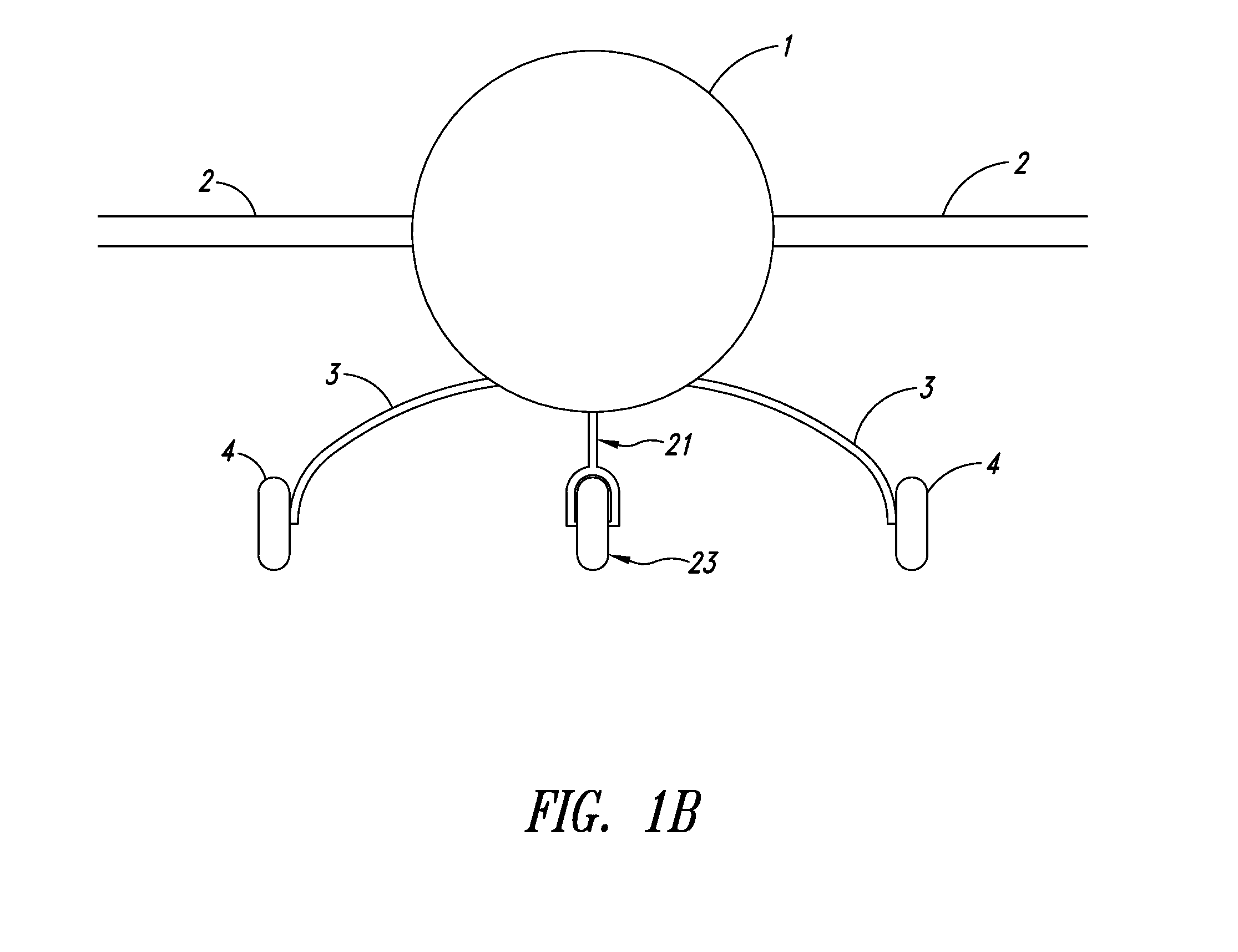Landing gear legs and method of making
- Summary
- Abstract
- Description
- Claims
- Application Information
AI Technical Summary
Benefits of technology
Problems solved by technology
Method used
Image
Examples
Embodiment Construction
[0032]In general, the main gear takes the brunt of the impact in a bad landing. Consequently, the drawings and description included here are primarily directed toward the main gear. However, pilots also manage to make colossal impacts with nose and tail wheels, and all descriptions herein are obviously usable in those applications too.
[0033]The front view of a generic airplane is shown in FIGS. 1A-1B, with fuselage (1) and wings (2) sitting on gear legs (3). In FIG. 1A, gear legs (3) are rigidly attached to fuselage (1) and to the axles (not shown) of wheel assemblies (4). It is common that gear legs (3) are individual units, each rigidly attached into the structure of fuselage (1). It is also common that gear legs (3) form a single beam between both wheel assemblies (4), with fuselage (1) perched in the middle of said beam. It is also common that gear legs (3) are firmly anchored into the structure of wings (2) rather than fuselage (1). It is also common that gear legs (3) are retr...
PUM
 Login to View More
Login to View More Abstract
Description
Claims
Application Information
 Login to View More
Login to View More - R&D
- Intellectual Property
- Life Sciences
- Materials
- Tech Scout
- Unparalleled Data Quality
- Higher Quality Content
- 60% Fewer Hallucinations
Browse by: Latest US Patents, China's latest patents, Technical Efficacy Thesaurus, Application Domain, Technology Topic, Popular Technical Reports.
© 2025 PatSnap. All rights reserved.Legal|Privacy policy|Modern Slavery Act Transparency Statement|Sitemap|About US| Contact US: help@patsnap.com



